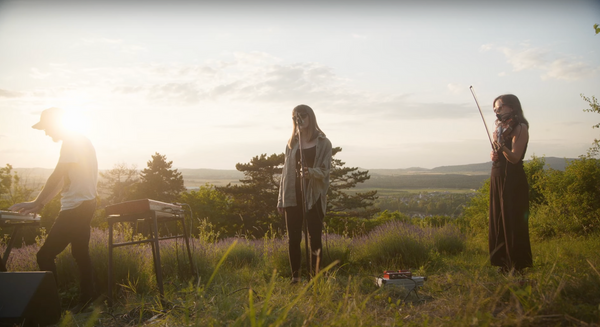The newest Hungarian cider will debut in front of the audience at the 2nd French Food Festival to take its place among the choices of moments worthy of a toast. Doré is made from the perfect combination of two varieties of apples from Heves County, carefully hand-picked to preserve their integrity and aroma—and with minimal interventions, it will enchant even organic wine lovers with its full-bodied flavors. We spoke to Eszter Csontos and Andrea Gál about the vintage-inspired Doré brand, which features clean and contemporary labels.
One of your goals is to pave the way for a quality cider culture in Hungary, as it is still unknown to many Hungarians. How did you first come across this drink?
E.CS.: I came across it by chance, ten years ago. I was working as a graphic designer for a national advertising agency, launching a commercial brand. The company’s marketers had organized a workshop for us to demonstrate how un-sweet real cider was, as opposed to the product we were launching, and had our team taste a bunch of English ones as a deterrent. But we really liked the tart, fresh fruitiness of the original. I remember never having tasted anything like it before. It’s a moment that’s completely ingrained in my taste memory.
A.G.: I was at the University of Horticulture when I decided I wanted to be a winemaker. I also studied viticulture and enology. I also interned at a renowned winery where I gained a lot of practical experience. Then, during my travels abroad, I first encountered cider—mainly in England and Spain—which is very similar to winemaking. Later on, in my private life, I became increasingly close to people—probably not by chance—who knew and loved this drink, so I started to seek it out in Hungary. At that time, there was no quality cider produced in Hungary. So I had to get started!
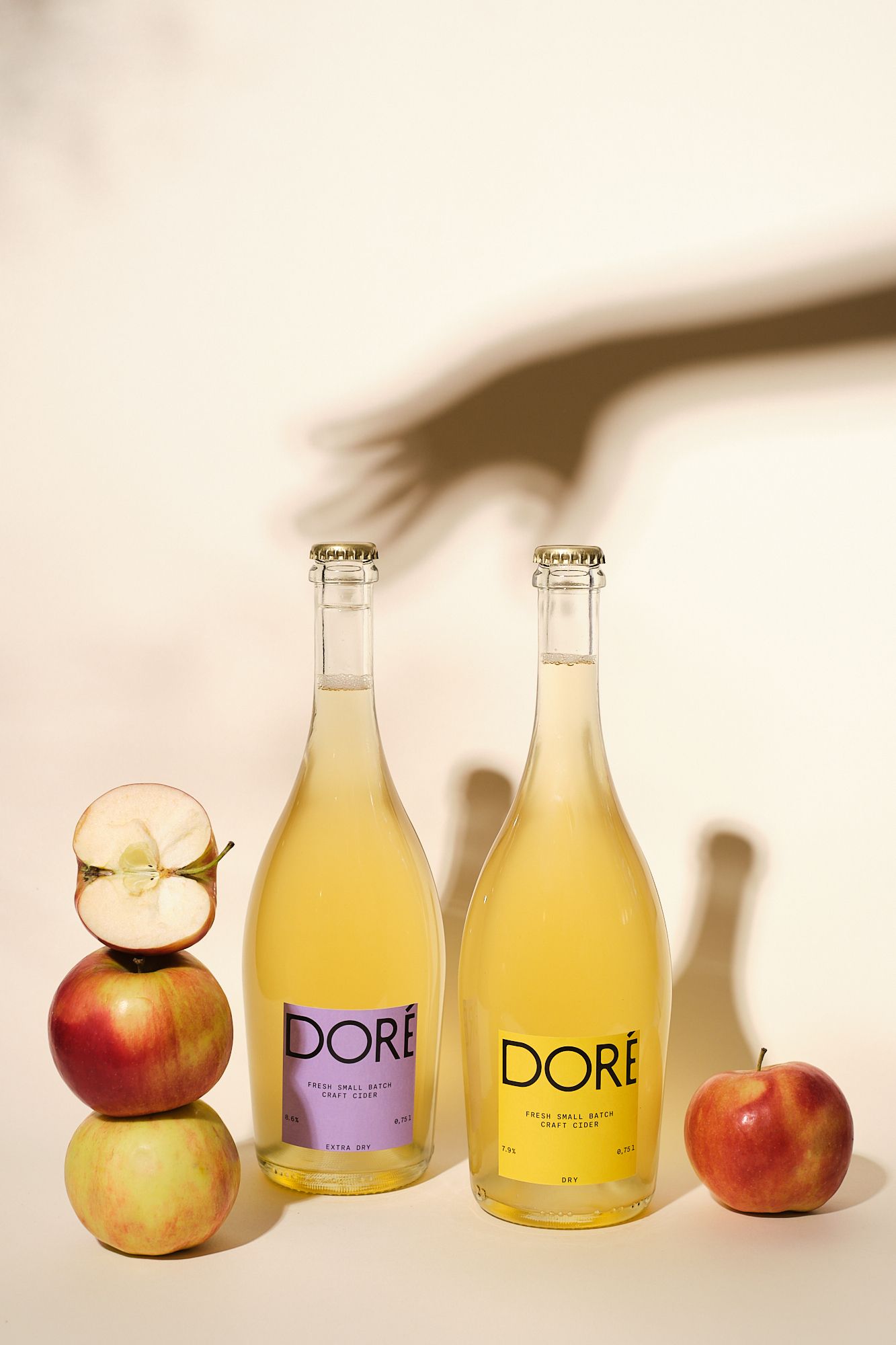

How long did it take you to find the perfect apples for Doré?
A. G.: In countries with a cider-making tradition, especially in England and France, there are many varieties of apples that are suitable only for cider. In Hungary, the roots of this drink are not so old (although research already refutes this), there have been no such apple varieties in this country so far. We mainly use apple trees grown here, such as Idared, Jonagold, etc. We and other cider makers have just started planting apple trees that are better suited to the cider base: they can give the drink a more characteristic flavor and body. Many such apple varieties are classified according to their flavor: they can range anywhere from sweet to tart. The type of apple you choose will have a significant impact on the taste of the cider. A fine cider usually requires a blend of several apples, with two or three varieties going into the fermentation tank. It is the harmony of these that gives the desired flavor. At Doré, too, it took several experimental phases to find the combination we liked best. This is how we created what we think is a truly sophisticated drink, where the layers of flavor follow each other very naturally, not separated, but harmoniously blended.
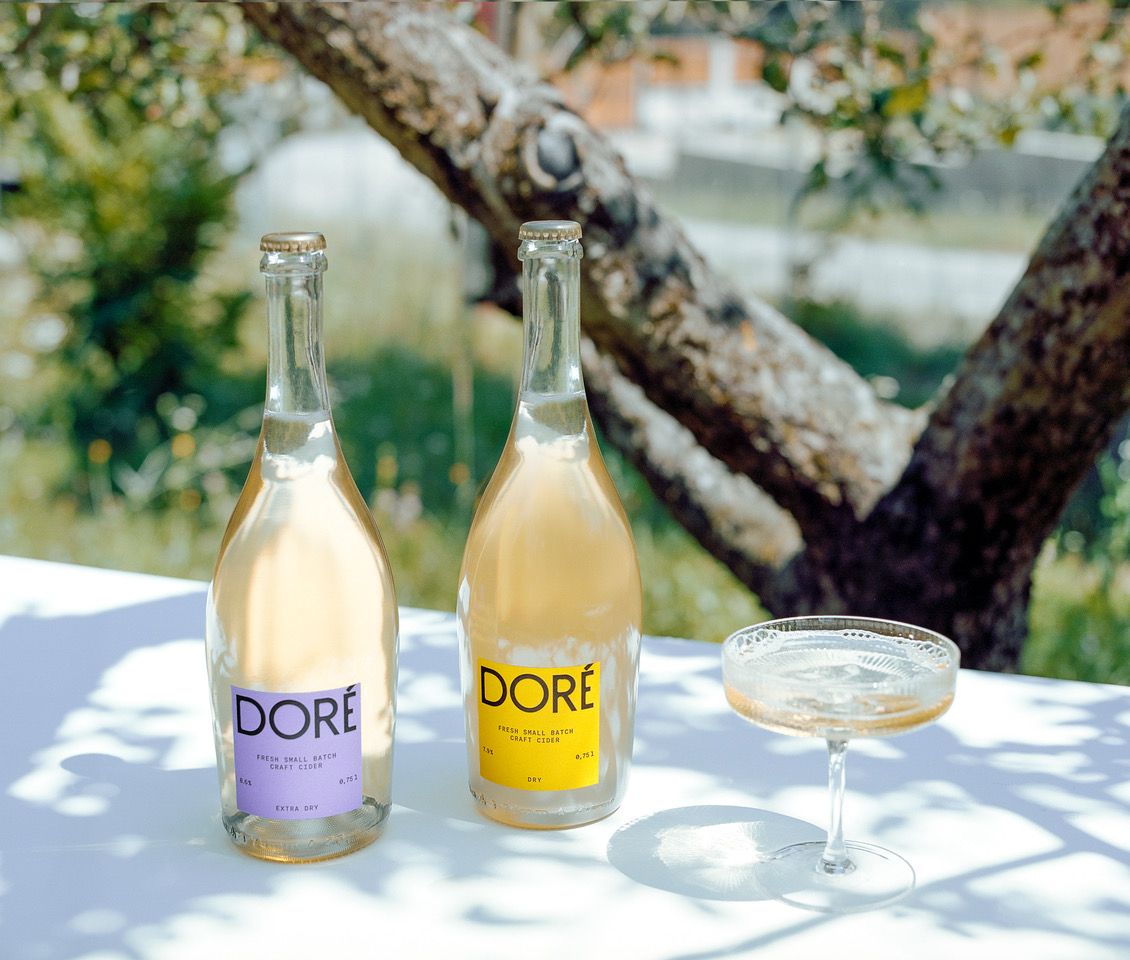

Tell us about the design, what aspects did you take into account in the design?
E. CS.: I’ve been working for over ten years on the identity and design of gastronomic brands, so I’ve had time to learn that beautiful graphics are not the best thing that can happen to a product. Rather, it’s to be in perfect harmony with the contents. I kept simplifying the original designs because I felt that such a clean drink, made only from apples, would be best suited to a brutalist design. I also had to take into account the need to raise awareness of the drink, as I would be paving the way for the launch of a completely new product, with a strong emphasis on spreading it as organically as possible.
I wanted to use accent colors to give a contemporary, modern feel, and to make a strong visual distinction between the flavors. I quickly found two colors that I thought worked well with the flavors; the raw uncompromising nature of the Extra Dry is well symbolized by the purple color, while the Dry is a softer, warmer flavor that the sunny yellow color matches. I quickly discarded various techniques that I really like, such as embossing and die cutting, in order to keep the overall effect as clean as possible. For the first limited edition, Inkredible Letterpress produced letterpress labels that are a joy to hold.
A. G.: We also wanted a special shape for the bottle, and I’m very happy that we found this slightly more bulbous shape, because it separates it from both the wines and the sparkling wines, so we can reinforce the creation of a new category.
E. CS.: I also fell in love with the bottle, which has a particular vintage feel to its shape: it reminds me of 19th-century Norman cider jugs. I wanted to offset that a bit, both because I like contrasts and because it’s a very contemporary, fresh drink. It’s made with minimal sulfur, without any added sugar or sweeteners, and we wanted to show that in the presentation.
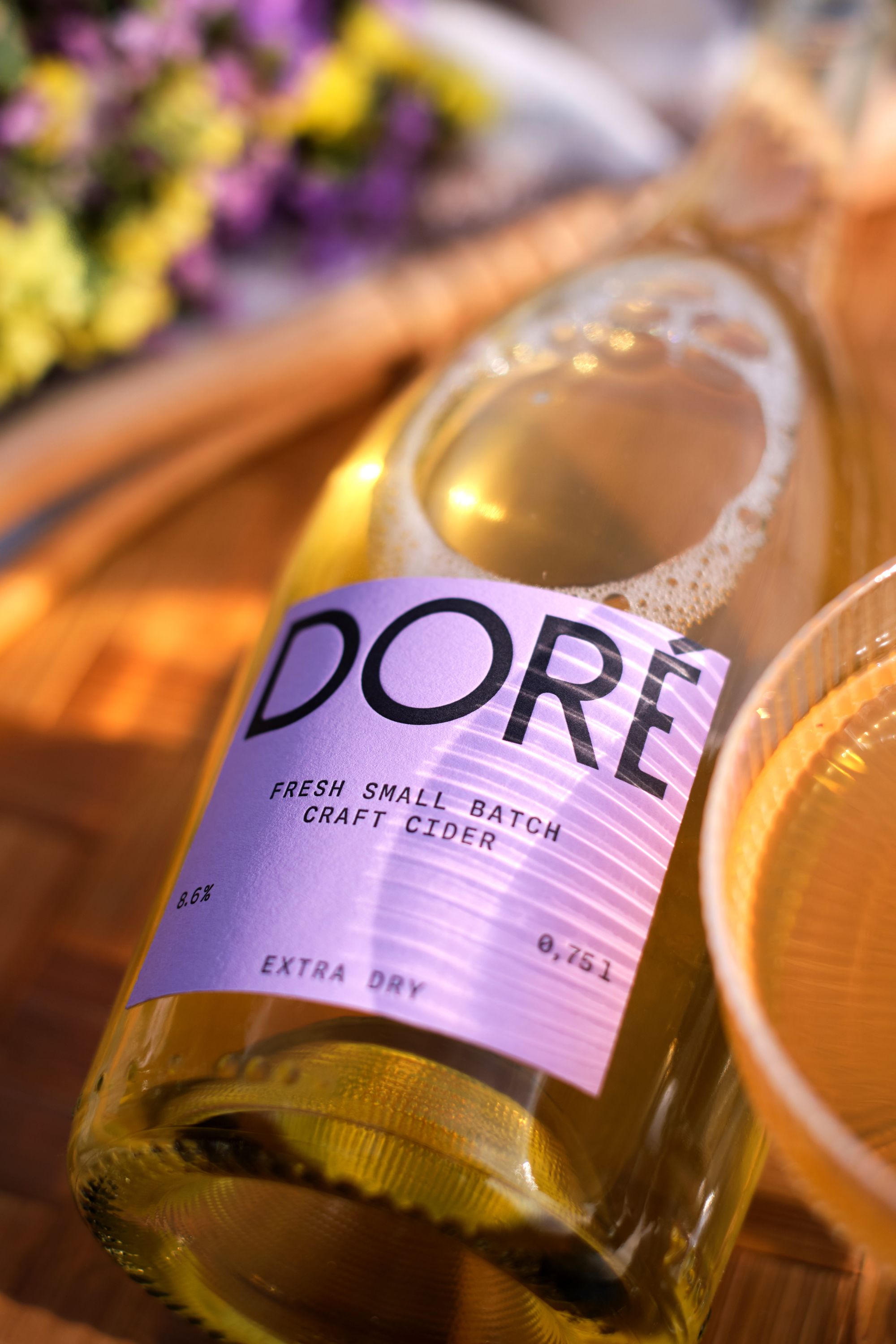
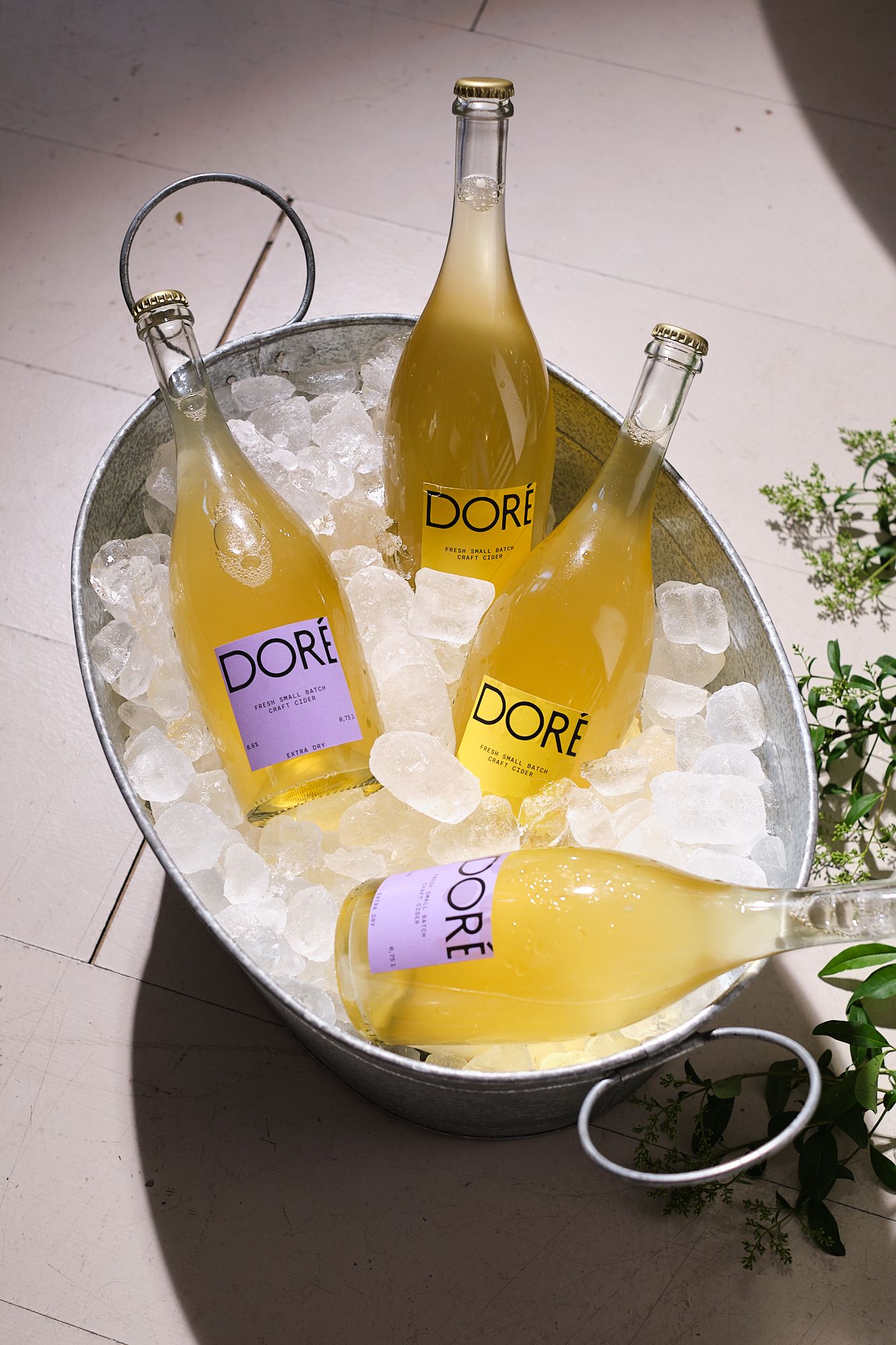
For what occasions do you recommend Doré ciders? Which foods are best paired with them?
E. CS.: It’s a bit of our unhidden goal with this drink to get people to think of Doré as an alternative to champagne. So whether it’s for a quiet celebration of everyday life on the terrace after a busy day, or for toasts at a gathering of family or friends, or even a waterfront sunset, it’s a super choice. The Viadukt Terasz, one of Budapest’s most unique locations, is the perfect place to enjoy a bottle of Doré on the terrace of the quay, which is closed to cars. In my opinion, Doré goes with everything that goes well with better quality champagne, and from my own experience, it goes well with snacks (oilseeds, cheese, olives) or lighter dishes: they offer an unforgettable taste experience with fish– and vegetable-based main courses.
A. G.: Doré should also be consumed in a champagne glass to create a dynamic flow of bubbles. I think this alone sets the mood when drinking it, and you can really indulge in the sensation that is the luxury of enjoying everyday life.

How has the Russian speaking minority in Estonia changed?

Stunning concrete house hidden in the forest in Slovakia
